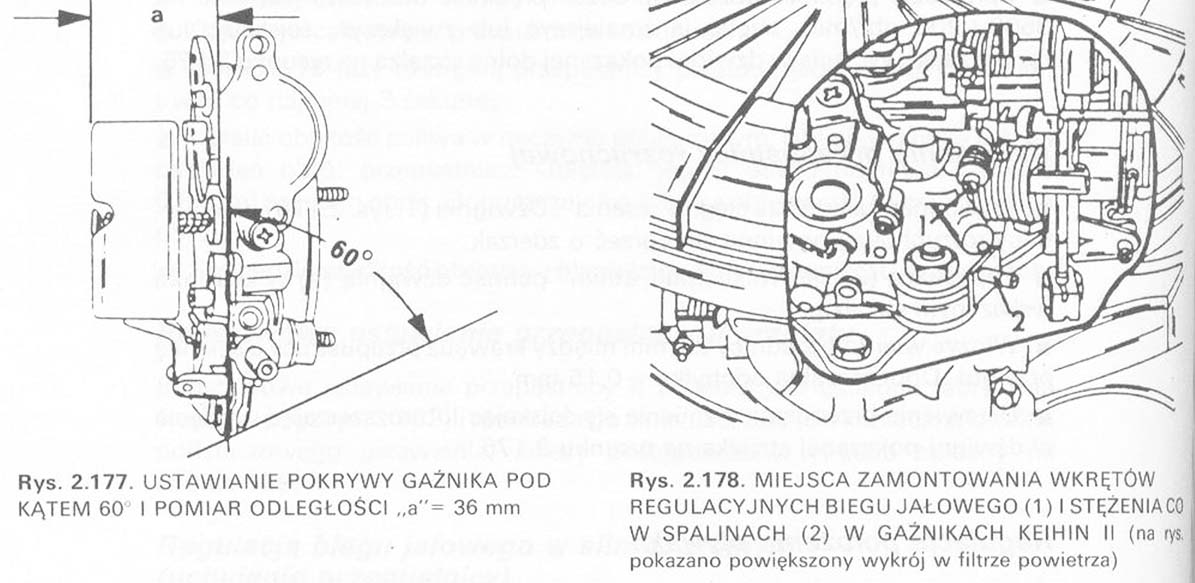Float position adjustment
The float position must only be adjusted when the needle valve or the float is replaced.
■ Set the carburetor cover to the position shown in the illustration 2.177. The ball of the valve needle sits flexibly in the needle – need caution, so that the ball is not pressed in.
■ Check dimension "a with a depth gauge” between the top of the float and the carburetor cover. Dimension "a” should be 36,6 ± 1,0 mm. The position of the float can be changed by adjusting the depth of the needle valve seat.
■ After adjustment, secure the seat against unscrewing with a varnish.
 Adjusting the idle speed and the concentration of carbon monoxide in the exhaust gas.
Adjusting the idle speed and the concentration of carbon monoxide in the exhaust gas.
Idle speed and exhaust gas composition are closely related. Start adjusting from the idle speed.
■ Bring the engine to operating temperature.
■ Check, that the start throttle is fully open. Choke cable” should be pushed all the way in.
■ Remove the crankcase ventilation hose from the port on the air filter. Plug the cable outlet.
■ Adjust the ignition.
■ Turn off the lighting. The radiator fan and the air conditioning unit must not work.
■ Connect the flue gas analyzer (in cars with catalytic converter, connect to the carbon monoxide test lead located in the engine compartment). The connection should be tight.
■ Measure the speed (tachometer). When it is necessary, adjust with the screw (1, lynx. 2.178) speed on 900 ± 50 RPM.
■ Measure the CO concentration in the exhaust gas with an analyzer. The concentration of carbon monoxide should be within the limits 1,0 ±0,5%. When it is necessary, turn the screw (2), until the correct exhaust gas composition is obtained. If the oxide concentration increases after the crankcase breather hose is installed, this is due to an excessive amount of oil vapor in the crankcase.
■ Check the idle speed again.
Testing the idle speed boost system during deceleration (mechanical gearbox).
The engine braking system works similarly to the Keihin I carburettors.